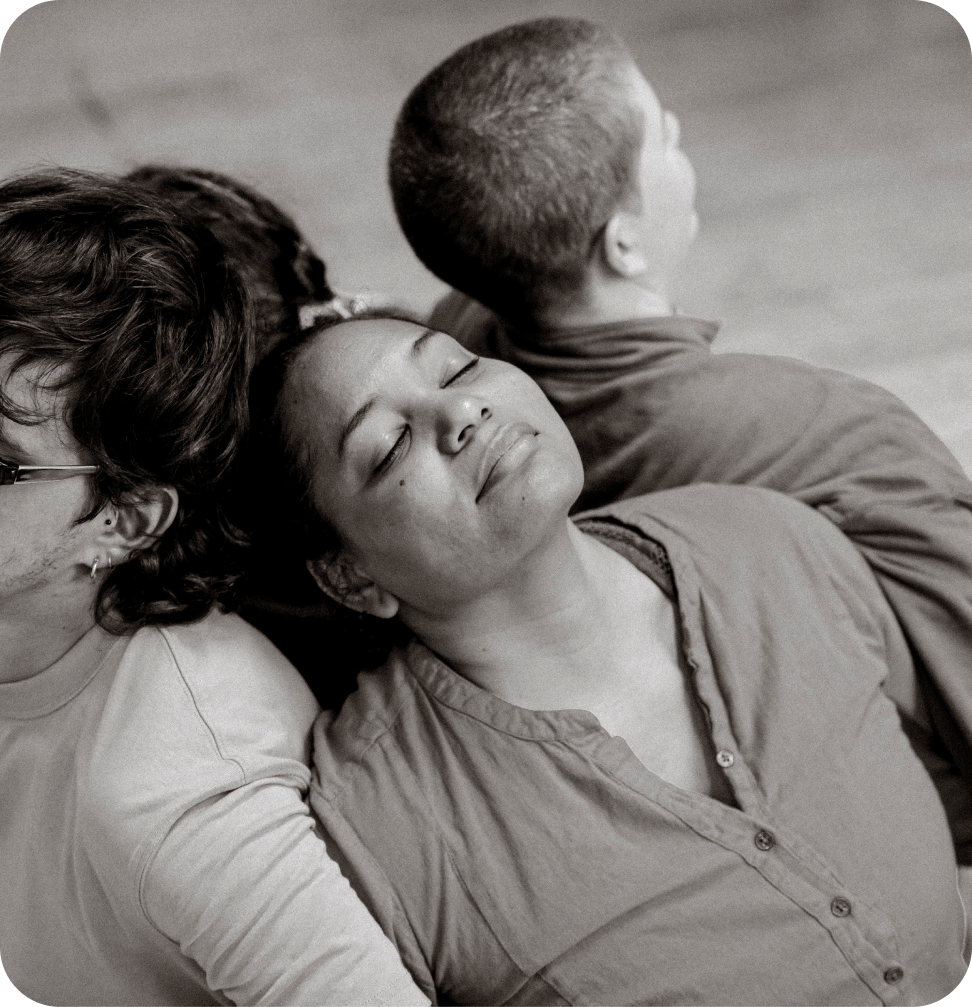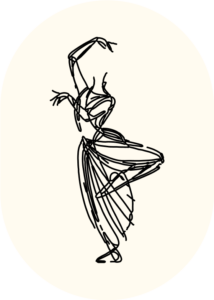BEYOND TECHNIQUE TO FIELDS OF RELATIONAL PRACTICE
Sádé Budhlall’s pedagogy moves beyond the limits of any one form, centering adaptable principles that support embodied learning across disciplines. Rather than teaching Odissi as fixed tradition, her approach offers a flexible framework that fosters critical exchange, shared inquiry, and meaningful dialogue between educators and learners.
At the heart of Sádé’s emerging pedagogy is a decolonial approach to movement education that centers the body as a site of cultural memory, political resistance, and collective becoming. Rooted in abolitionist somatics and Caribbean epistemologies, her practice engages with dance not as technique alone, but as a means of sensing, remembering, and remaking.
Her framework draws on ancestral rituals, oral traditions, and intercultural entanglements to create learning environments where knowledge is felt, embodied, and co-created. Learners are invited to move beyond mimicry toward deep attunement with sensation, emotion, land, and history, exploring how race, identity, and inherited structures are carried, held, and potentially undone in the body.
Through this process, dance becomes a space for disrupting colonial hierarchies and reimagining inherited forms. Her pedagogy affirms multiplicity, relationality, and embodied storytelling, cultivating practices that are improvisational, politicized, and rooted in shared inquiry. It invites learners to move with critical care and radical presence toward ways of knowing that hold space for complexity, contradiction, and liberation.


Sádé’s framework supports cultural expression, personal growth, and collective authorship. Centering peer exchange, community engagement, and responsive facilitation, it empowers students to create work that speaks to social and cultural realities through their own lenses.

A key focus of Sádé’s pedagogy is emancipatory learning grounded in decolonial Caribbean thought. Centering co-creation, agency, and critical reflection, it invites learners to use movement to question power, reclaim authorship, and engage deeply with their lived realities.

Ultimately, her practice aims to contribute to a dynamic model of dance education—one that equips learners to facilitate, create, and engage with the world as artistic citizens.